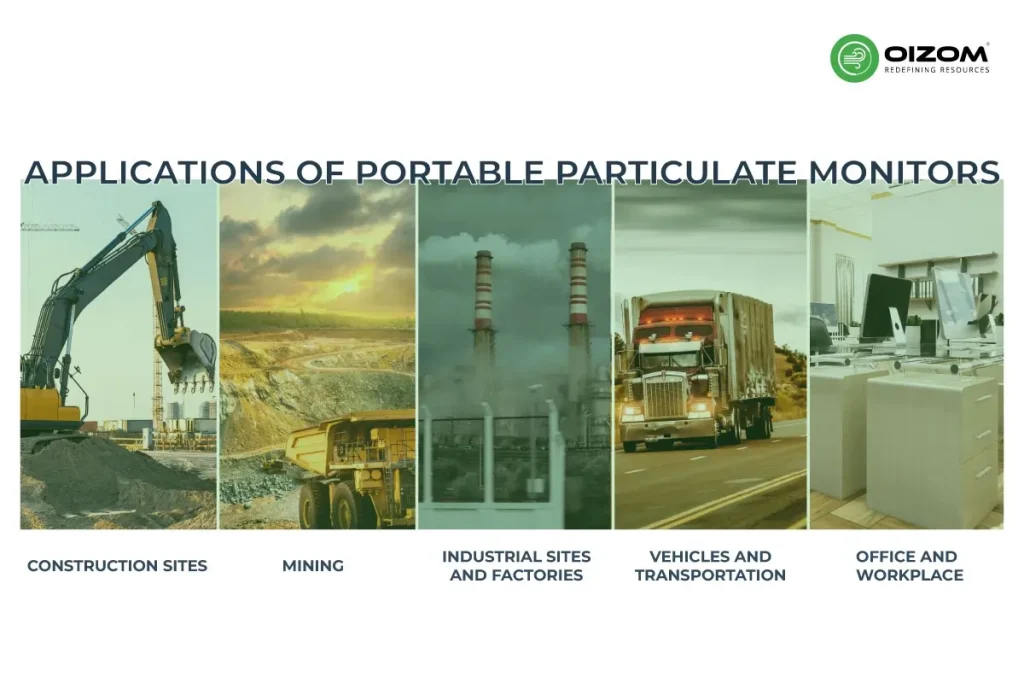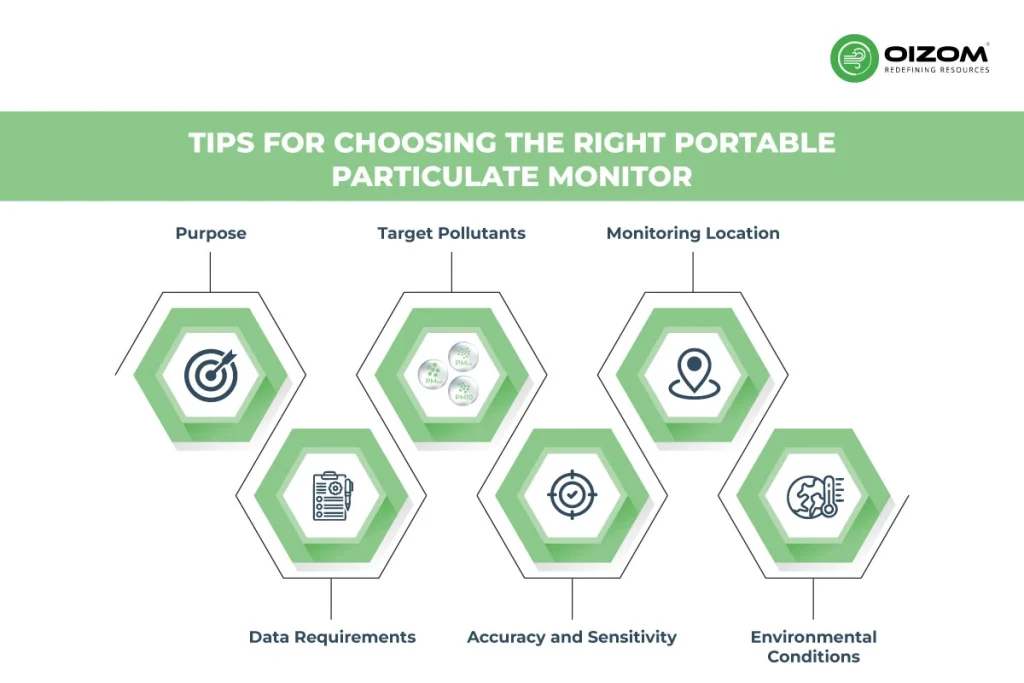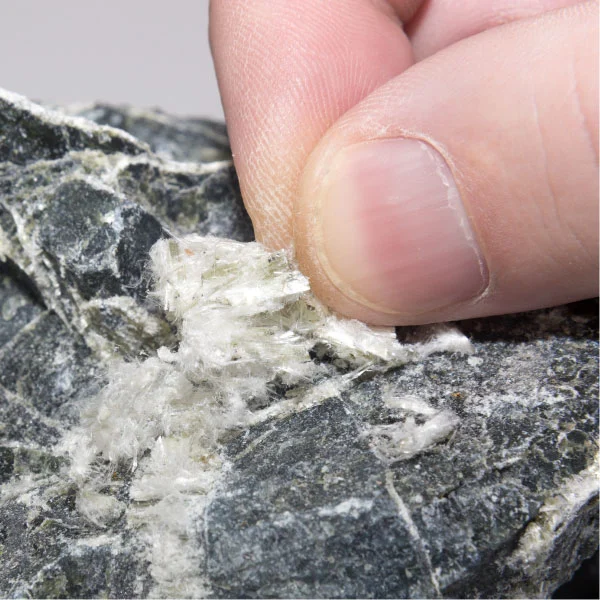Summary of Blog
Air pollution, especially particulate matter (PM), poses serious health risks, including heart disease, lung conditions, and pregnancy complications. Real-time monitoring is crucial for ensuring safe environments in industries, cities, and workplaces.
Portable particulate monitors offer a flexible and accurate way to measure air quality anywhere. Unlike fixed stations, these compact devices provide instant PM1, PM2.5, PM10, and PM100 readings, helping professionals track pollution in real-time.
Oizom’s Pollusense is designed for environmental audits, workplace safety, and regulatory compliance. It features:
- Advanced OPC Sensors – High-precision PM detection
- 24 Hour Battery Life – Long-lasting performance
- Rugged, Weatherproof Design (IP65) – Works in harsh environments
- Seamless Connectivity – Wi-Fi, GSM, LTE, LoRa, Ethernet, Satellite
- Real-Time Data & Cloud Integration – Easy access to pollution insights
Applications: Construction sites, mining, industries, transportation, and offices benefit from instant air quality assessments, enabling quick decisions to reduce exposure risks.
With advancements in AI, IoT, and miniaturization, portable monitors are transforming air pollution monitoring, making cleaner air more accessible.
Want reliable air quality data anytime, anywhere? Let’s talk Pollusense!
Portable Particulate Monitor: A Quick Guide
Airborne particulate matter (PM) is one of the biggest contributors to poor air quality, impacting both health and environmental safety. Did you know this? Long-term exposure to PM2.5 can lead to serious health issues, including heart disease, lung cancer, COPD, pneumonia, stroke, type 2 diabetes, and complications during pregnancy. Monitoring PM levels in real-time is essential, especially in industrial areas, urban spaces, and workplaces where air quality can fluctuate. This is where portable particulate monitors play a vital role.
Unlike stationary, portable particulate monitors offer flexibility, real-time data, and on-the-go air quality assessment. They help environmental professionals, researchers, and industries measure PM concentrations in different locations without the hassle of fixed installations. These compact devices use advanced sensors to detect and quantify PM1, PM2.5, PM10, and PM100 levels, ensuring accurate and actionable insights.
The biggest advantage? Portability and ease of use. With instant readings, data logging, and integration with cloud-based systems, these monitors enable proactive decision-making. For regulatory compliance, workplace safety, or environmental research, portable monitors help you avoid air pollution challenges.
In this guide, we’ll explore how these devices work, their benefits, and what to look for when choosing the right one for your needs. Let’s dive in!
The Future of Air Quality Monitoring: Portable Solutions
Air quality monitoring has traditionally relied on fixed stations placed in specific locations, continuously collecting data. While effective, this approach has limitations. It requires multiple stations to get a complete picture of air pollution across an area.
In dynamic environments like cities with heavy traffic, changing weather, and sporadic emissions, air quality can fluctuate rapidly, and fixed monitors may miss these variations.
In some cases, such as investigating diesel emissions or evaluating a new policy’s impact, fixed stations lack the flexibility needed for quick assessments. Additionally, monitoring networks often have gaps or may not be enough to fully understand air pollution patterns. Setting up permanent stations can also be costly and unnecessary in certain situations.
This is where portable air quality monitors come in. They provide a flexible, cost-effective, and detailed way to track air pollution in real time, filling monitoring gaps and adapting to different needs. With the ability to measure air quality anywhere, portable monitors help professionals gain deeper insights and make data-driven decisions for better air quality management.
Explore more about portable monitors and how they’re improving air quality tracking even in some of the world’s most polluted places like the most polluted cities in the world.
What is a Portable Particulate Monitor?
A portable particulate monitor is a compact, high-precision device designed to measure airborne particulate matter (PM) in real-time. These monitors detect and quantify different PM sizes, such as PM1, PM2.5, PM10, and even PM100, depending on the technology used. Unlike stationary monitoring systems, portable monitors offer mobility, making them ideal for field assessments, workplace safety, and regulatory compliance.
Equipped with advanced laser scattering sensors, these devices provide accurate air quality data on the go. Some models integrate cloud connectivity, GPS tracking, and data logging, enabling professionals to analyze trends and make informed decisions. Whether used for environmental research, industrial hygiene, or occupational safety, these monitors help identify pollution hotspots and assess exposure risks efficiently.
The key benefits of portable particulate monitors include:
- Real-time monitoring for instant decision-making
- High portability for on-site and multi-location assessments
- Data logging & cloud integration for detailed analysis
- Regulatory compliance by ensuring air quality standards are met
With increasing concerns over air pollution, portable particulate monitors play a crucial role in proactive air quality management, making them essential tools for researchers, industries, and policymakers.
Imagine having a portable air quality monitor that gives you real-time, accurate insights wherever you go. That’s exactly what Pollusense does! Designed for industries, environmental audits, and professionals, this compact device tracks particulate matter with precision.
No more guesswork, just instant, reliable air quality data at your fingertips. Whether you’re in the field, on-site, or conducting research, Pollusense keeps you informed anytime, anywhere! Ready to experience next-level air quality monitoring? Let’s talk Pollusense!
Key Features of Portable Particular Monitor
A portable particulate monitor is a critical tool for professionals conducting real-time air quality assessments. Unlike fixed monitoring stations, these devices provide on-the-go, high-precision data, making them ideal for industries, environmental audits, and occupational safety applications.
Advanced Sensing Technology
Pollusense utilizes Optical Particle Counter technology with precision optics to detect particulate matter with resolution as small as 0.1 μg/m³ for PM2.5, ensuring high sensitivity and accuracy in diverse environments. Additionally, Pollusense can measure PM100 with a detection range of up to 30 mg/m³, making it suitable for high-dust environments such as construction sites, mining operations, and industrial workplaces where larger particulate concentrations need monitoring.
Real-Time Data Correction & Environmental Adaptability
An onboard Quad Core ARM Cortex processor enables real-time correction algorithms to adjust for humidity interference (up to 95% RH) and temperature variations (-10°C to 50°C), ensuring measurement integrity outdoors.
Extended Battery Life & Rapid Charging
Pollusense operates for 24 hours on a single charge, designed for field use, with a Type-C Charger, ideal for extended deployments.
Robust & Weatherproof Design
The IP65-rated enclosure protects against dust, water, and harsh environments while maintaining long-term calibration stability.
Seamless Data Acquisition & Connectivity
With 16GB onboard storage and multiple connectivity options (Wi-Fi/GSM/LTE/WiFi/LoRa/Ethernet/Satellite), Pollusense integrates easily into existing monitoring networks.
Applications of Portable Particulate Monitors
When it comes to monitoring air quality, integrating portable air monitoring techniques with traditional fixed stations is an effective approach. By combining portable air quality monitoring with existing fixed sites, we acquire a more comprehensive and spatially representative understanding of air quality, allowing for better decision-making. Below are the places where users can use to monitor air quality with portable air monitoring devices:

Construction Sites
Construction dust is an often overlooked but serious threat on bustling construction sites. While towering cranes and noisy machinery grab attention, the fine dust particles like silica, wood dust, and cement silently remain in the air. These tiny particles, often less than 10 micrometers, can easily enter the respiratory system, posing serious health risks.
This dust isn’t just a byproduct; it’s a real environmental and health hazard. Understanding its impact is crucial to keeping workers and nearby communities safe. That’s where Pollusense comes in. As a portable air quality monitor, Pollusense is designed to track particulate matter like construction dust in real-time. With its compact, rugged design, it’s easy to move around different sites, and its accurate monitoring helps you take immediate action to minimize dust exposure. Whether it’s measuring dust levels or tracking harmful gases, Pollusense equips you with the data you need to ensure a safer and healthier construction environment.
Did you know? Around 4,000 construction workers suffer from work-related lung and breathing problems, while 16,000 workers experience stress, depression, or anxiety due to their jobs.
Mining
Mining operations contribute significantly to poor air quality across the globe. Both above-ground and underground mining generate air pollution, releasing harmful aerosols such as particulate matter, arsenic, and diesel emissions. These pollutants pose health risks to workers and impact the surrounding environment.
A significant source of mining-related air pollution is mineral extraction, which includes excavation, blasting, material transport, and wind erosion. Heavy machinery and vehicles used in mining also contribute to airborne pollutants through exhaust emissions.
In metal mining, smelting involves extremely high temperatures, releasing various toxins, including:
- Lead
- Nitrogen and sulfur compounds
- Mercury
- Sulfur dioxide (SO₂)
- Zinc, cadmium, and uranium
Sulfur dioxide emissions are particularly concerning as they contribute to acid rain, which harms ecosystems and water sources. Additionally, smelting releases large amounts of greenhouse gases, further worsening climate change.
Were aware of this? Every step of mining, from ore extraction to waste generation and refining, releases air pollution, affecting both the environment and public health.
Air quality monitoring is not just about meeting regulatory requirements. It’s essential for assessing pollution exposure levels and protecting workers, nearby communities, and the environment from harmful emissions.
Industrial Sites and Factories
Have you ever thought about how air quality impacts factory workers? In industrial settings, poor air quality can lead to health issues, sickness, and disease, severely affecting workplace productivity. That’s why it’s crucial for factories and workplaces to monitor and improve air quality actively.
Often, we get so used to poor indoor air quality that we don’t even realize there’s an issue until we dig deeper. With Pollusense, a portable air quality monitor, you can quickly and accurately measure pollutants in high-emission environments. It monitors gases, particulate matter, and noise, giving you real-time data to make informed decisions. Its rugged design, long battery life, and easy mobility make it perfect for ensuring a healthier and safer workspace across multiple locations.
Vehicles and Transportation
Moving vehicles, such as trucks and cars, can also be equipped with appropriate portable air quality devices to evaluate air quality. This is a versatile and cost-effective method for monitoring air quality in communities and rural areas without permanent automated monitoring stations. Portable air quality monitors measure environmental pollution while on the go. As explained above, they are installed on support vehicles (buses, delivery vans, etc.) and monitor air quality throughout journeys, allowing for the storage of hyperlocal air quality data.
Office and Workplace
Dust is everywhere in business, from the constant need of construction sites to the vibrating machines of manufacturing plants and even in the seemingly peaceful office surroundings where paper and machines coexist. These particles, ranging in size from microscopic to visible to the naked eye, are formed by various processes. Stacking components, carving wood, and molding plastic all contribute to the particulate air that defines our professional environments.
Did you know this? The International Labor Organization notes that over 1 billion workers yearly are exposed to hazardous substances, like fumes, dust, pollutants, and vapors.
Air quality monitoring helps maintain a healthier workplace environment. Poor air quality can cause various health issues, including allergies, respiratory conditions, and even cardiovascular disease.
How Does a Portable Particulate Monitor Work?
Portable air quality monitors are designed to detect and measure pollutants in real time. These devices use advanced sensor technology to track particulate matter (PM). Most monitors rely on laser-based detection. Laser sensors measure particulate matter by analyzing how light scatters when it hits airborne particles.
What makes portable monitors unique is their flexibility. They can be used anywhere, from industrial sites to urban areas, offering on-the-go air quality assessments. Many models also support wireless connectivity, enabling real-time data transmission to cloud platforms or mobile apps for easy analysis.
Introducing Oizom’s Pollusense
Oizom has launched Pollusense, an advanced portable air quality monitor that delivers real-time, accurate data on air pollution. Using cutting-edge sensor technology, Pollusense detects particulate matter and environmental factors with precision. This compact, versatile device is perfect for industries, environmental audits, and professionals who need flexible air quality monitoring on the go.
Data Collection & Processing
Portable monitors can deliver high-quality data similar to fixed stations, but since they are moved frequently, careful calibration and maintenance are crucial. Tracking location data with GPS ensures proper monitoring records. Before collecting data, users should allow time for the device to stabilize and ensure calibration checks are performed at each new location.
Once the data is captured, it is processed instantly and transmitted via Wi-Fi, Bluetooth, or cellular networks. This allows users to monitor air quality trends, pinpoint pollution sources, and take immediate action when needed.
Calibration & Accuracy
Accurate air quality measurements require proper calibration. Oizom follows a pre-deployment calibration process to ensure reliable data:
- The monitors are operated adjacent to a custom-built reference station, beta attenuation monitor (BAM), housing U.S. EPA-designated Federal Equivalent Method (FEM) for 72 hrs for collocation calibration to ensure accurate data quality.
Tips for Choosing the Right Portable Particulate Monitor

Selecting the right portable particulate monitor depends on several factors, ensuring it meets your specific monitoring needs. Here’s what to consider:
- Purpose & Application
Define your use case, are you monitoring personal exposure, indoor air quality, environmental pollution, or regulatory compliance? Different applications require varying levels of accuracy and data reporting. - Target Pollutants
Identify the particulate matter sizes you need to measure. PM2.5 and PM10 are the most common, but some applications require PM1, PM2.5, or PM100 for specialized monitoring. - Monitoring Location
Will you be using the monitor indoors, outdoors, or in an industrial setting? Outdoor monitors should have weatherproof enclosures (e.g., IP65-rated) to withstand harsh conditions. - Data Requirements
Do you need real-time readings, data logging, or wireless connectivity (Wi-Fi, Bluetooth, or cloud integration)? Ensure the monitor supports remote access and trend analysis if needed. - Accuracy & Sensitivity
Check if the monitor uses high-precision laser scattering sensors and includes humidity and temperature compensation to improve data reliability. - Environmental Conditions
If you’ll be using the device in extreme temperatures (-10°C to 50°C) or high humidity (up to 95% RH), choose a monitor that maintains accuracy in such environments.
By considering these factors, you can select a reliable and accurate portable particulate monitor tailored to your needs.
Conclusion
Portable particulate monitors have become essential tools for real-time air quality assessment, offering accuracy, flexibility, and ease of use across various industries. With advanced sensor technology, these devices provide instant insights into PM levels, helping professionals ensure regulatory compliance, workplace safety, and environmental protection.
Looking ahead, the future of portable air monitoring is even more promising. Innovations in AI-driven analytics, cloud connectivity, and IoT integration will enhance data accuracy and predictive capabilities. Miniaturization and enhanced battery efficiency will make these monitors even more convenient for field applications. Additionally, emerging low-cost sensors with improved precision will expand access to air quality monitoring, empowering more organizations to take proactive measures against pollution.
As air quality concerns continue to grow, portable particulate monitors will play a key role in shaping smarter, data-driven environmental strategies. Investing in the right monitoring technology today means a good, healthier future for all.
FAQS
Portable monitors use advanced Optical Particle Counter technology for high precision. Accuracy depends on sensor quality, calibration, and environmental conditions. Regular maintenance ensures reliable readings.
Calibration involves pre-deployment lab calibration and on-site verification using reference monitors or calibration gases. Regular calibration ensures consistent and accurate air quality measurements.






